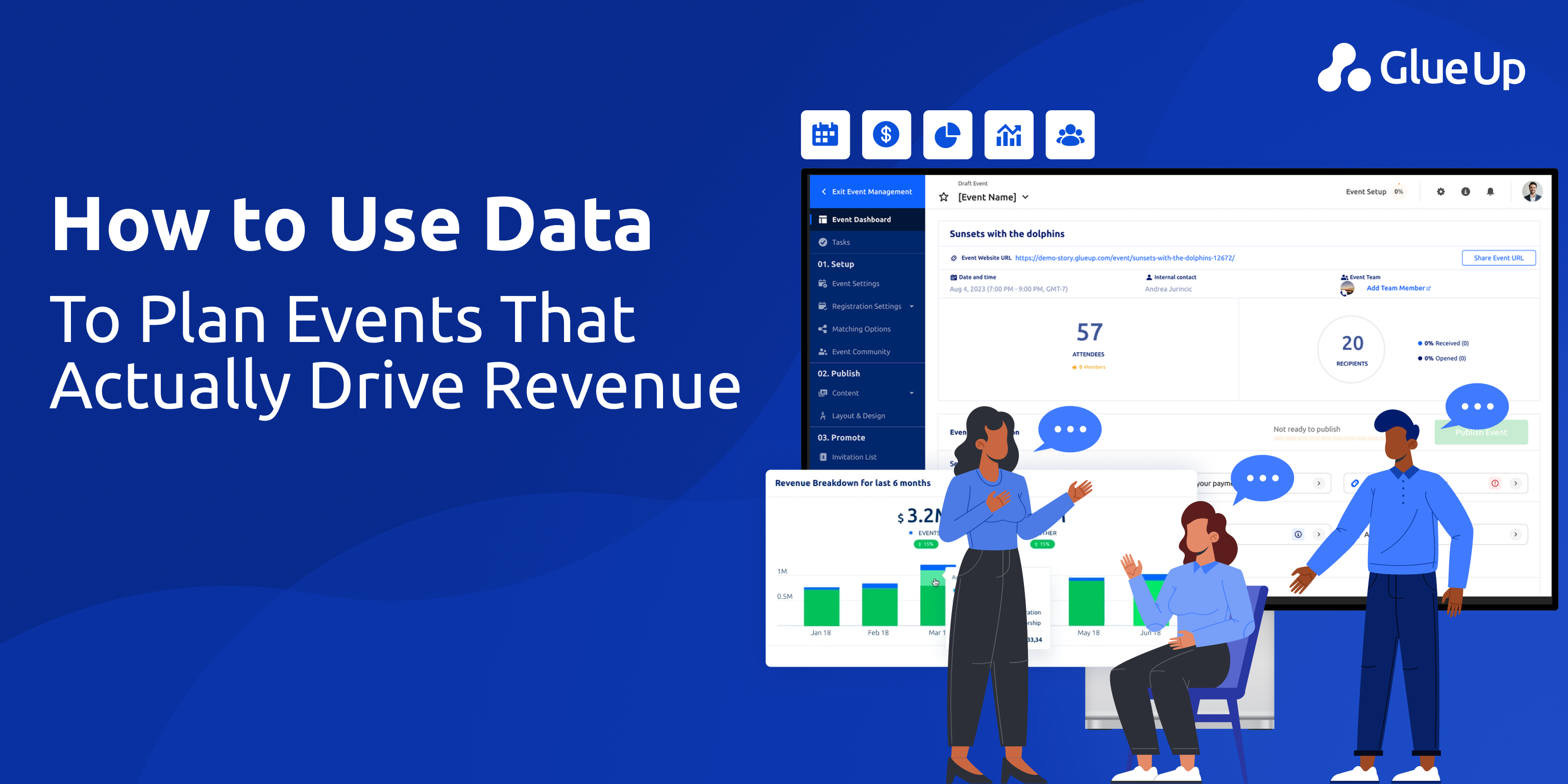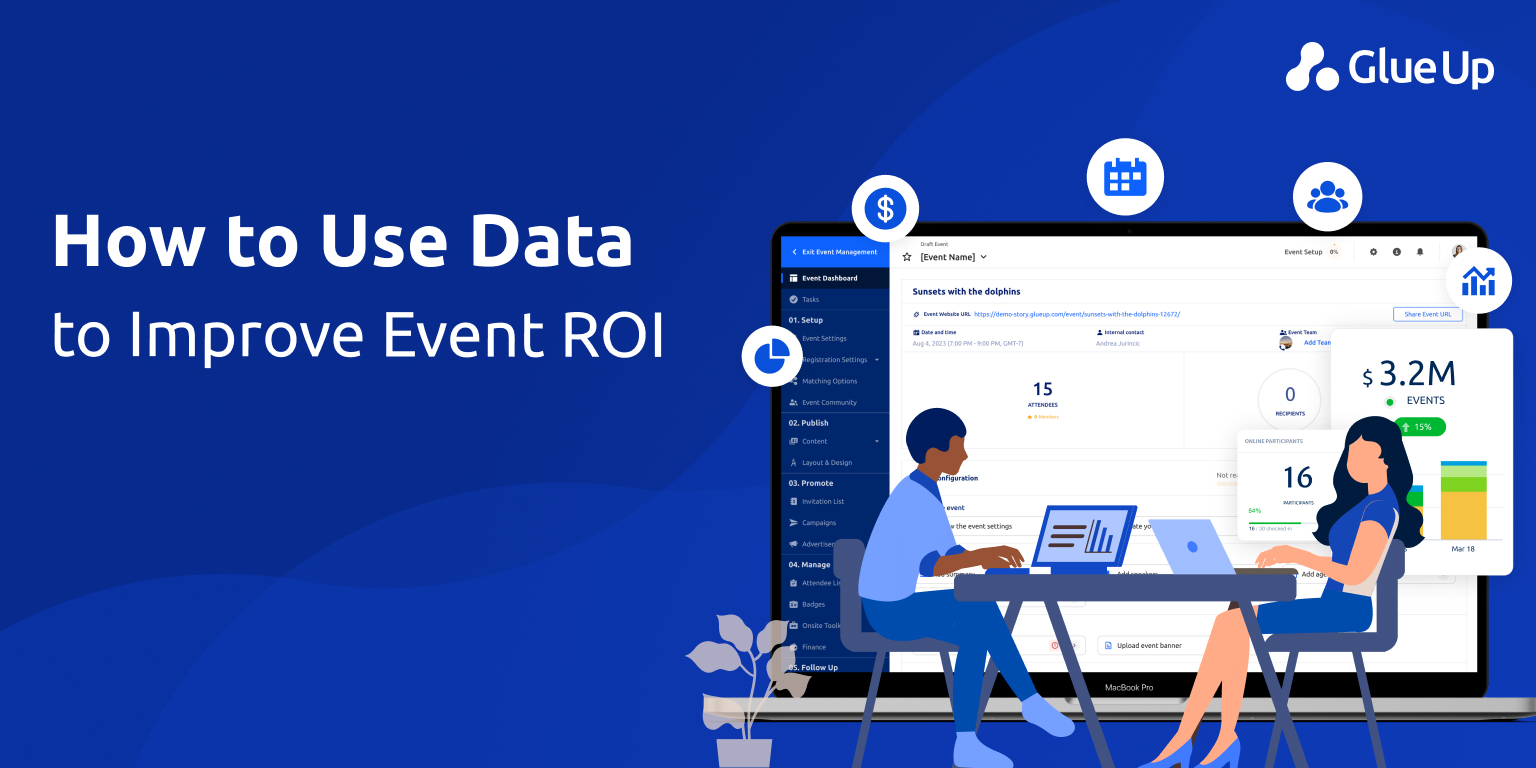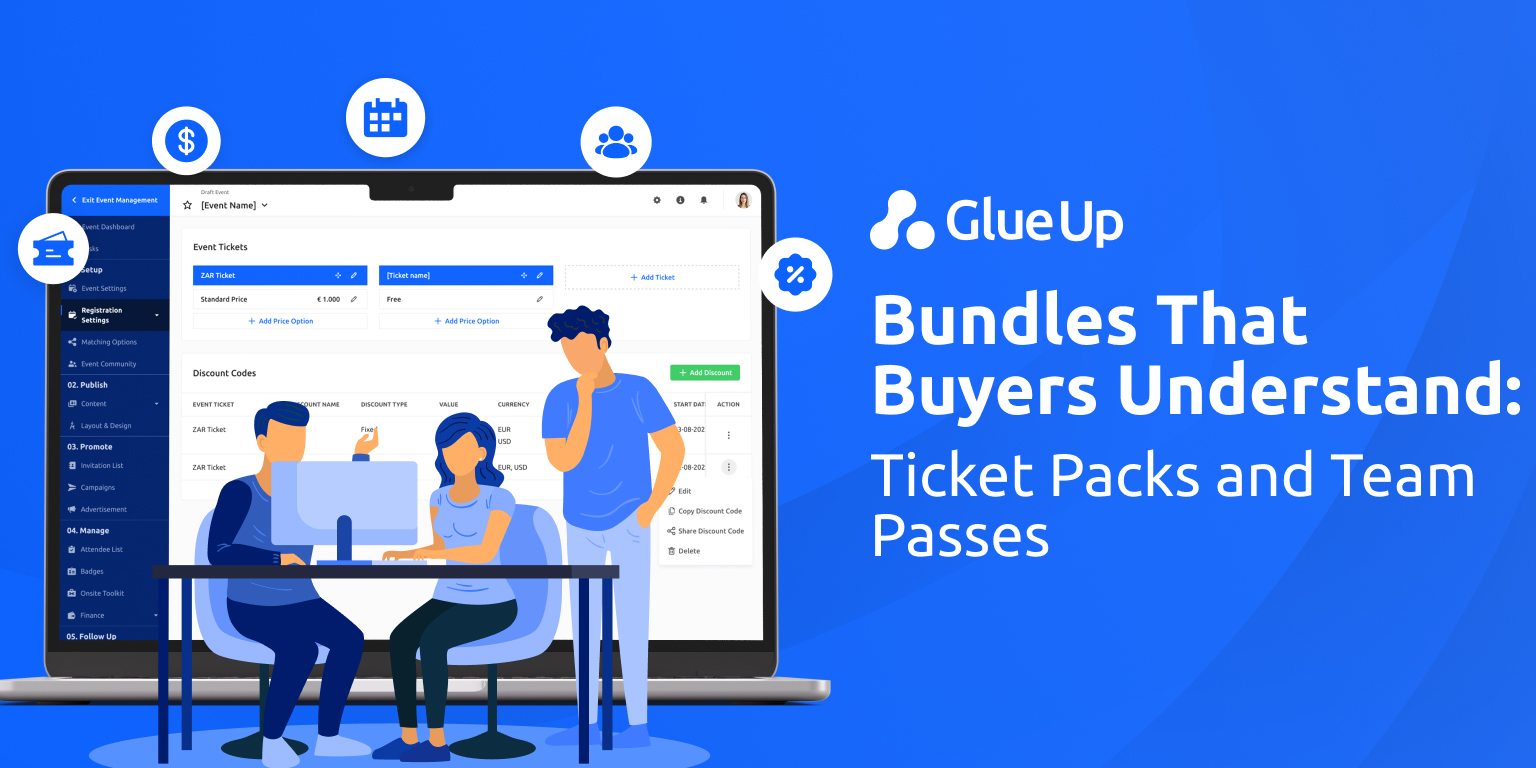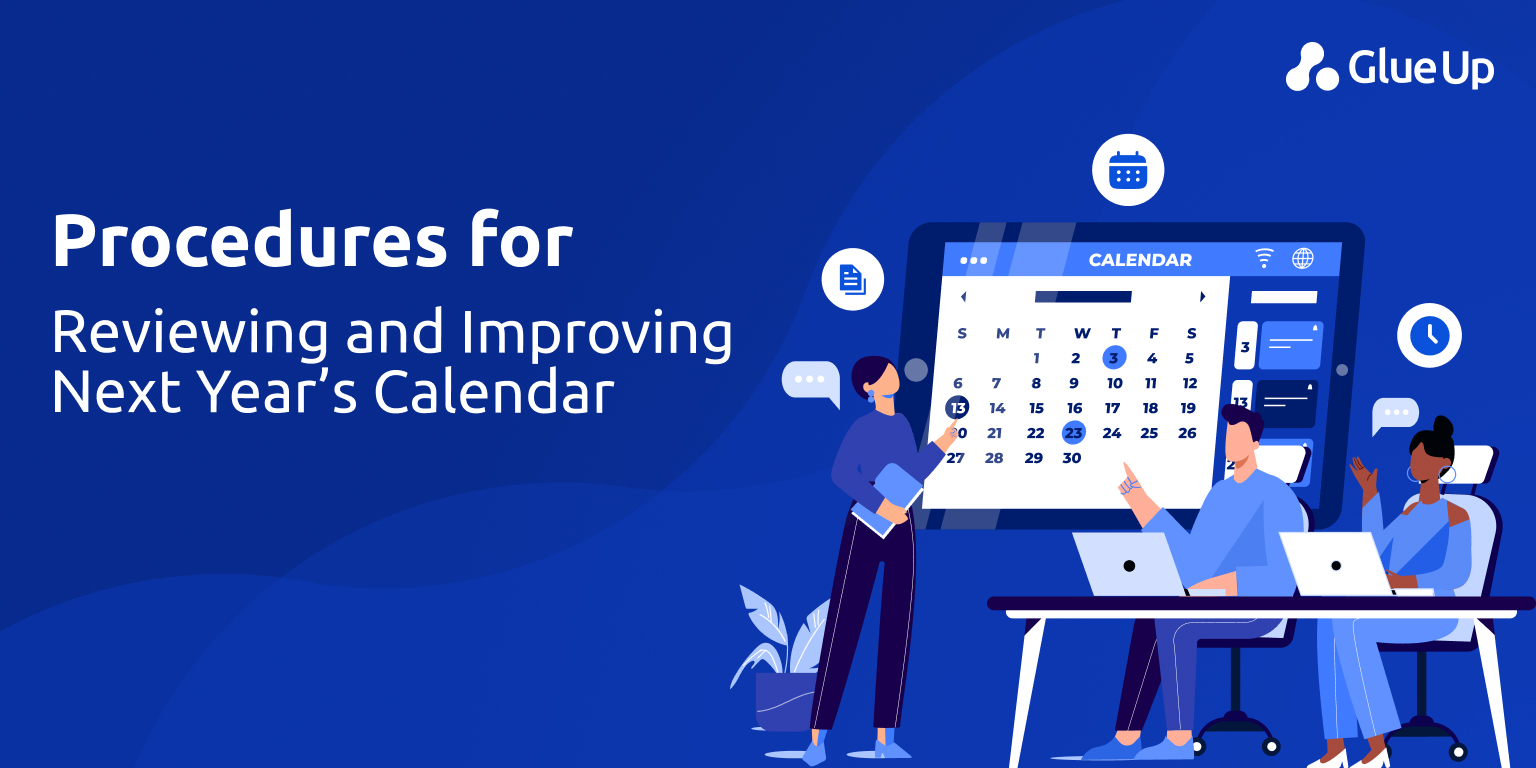
Every association professional knows this scene.
The post-event survey is glowing, attendance is strong, and yet your board asks, “What did we actually gain from it?”
That’s the moment most event teams realize the painful gap between running an event and proving its financial value.
For Sarah, an executive director at a mid-sized professional association, it hit when her top sponsor said, “Traffic was great, but we didn’t get real business out of it.” Months of planning, long nights, and thousands spent, yet no way to connect the dots between engagement and revenue.
That’s where data driven event planning begins. It’s not about collecting more numbers; it’s about designing every decision: sessions, sponsorships, pricing, follow-ups; around measurable outcomes. When you treat your events as living revenue systems instead of one-off projects, everything changes.
In this piece, we’ll unpack how to plan and execute events that directly drive income, renewals, and retention. You’ll see why top-performing associations now treat data as strategy, and how platforms like Glue Up help operationalize it without adding more work.
Key Takeaways
Associations must move beyond “breaking even.” By treating events as revenue engines, tracking cash today, near-term pipeline, and long-term value, organizations can prove financial outcomes instead of reporting attendance numbers.
Segmenting audiences and designing events around intent (rather than assumptions) increases revenue potential. Personalization, different invitations, tailored agendas, and micro-events, translates directly into engagement and sponsor value.
The foundation of data driven event planning is clean, actionable data. Tracking six attendee actions, four sponsor metrics, and enforcing consistent definitions ensures every number tells a story and supports ROI.
Following up within minutes (not days) can multiply conversions eightfold. Running structured tests, pricing models, agenda variations, and sponsor meeting algorithms, turns each event into a learning loop that pays for itself.
Glue Up brings all your event, CRM, and financial data into one ecosystem, enabling automation, AI insights, and real-time reporting. The result: less manual work, faster sponsor renewals, and events that consistently generate measurable revenue growth.
Quick Reads
The Three Ledgers of Event Revenue
Traditional event planning has one goal: break even.
But data driven event planning shifts focus from cost recovery to return generation by viewing revenue in three timeframes, what we call “the three ledgers.”
Cash Today: This includes registrations, VIP upgrades, paid workshops, and merchandise sales. It’s the visible ledger most organizations already track.
Near-Term Pipeline: These are your sponsor meetings, qualified leads, or partnership conversations that result from the event. Think opportunities opened or proposals sent.
Long-Term Value: This is where real sustainability lives: member renewals, sponsor retention, increased brand visibility, and higher lifetime value.
Let’s take two scenarios.
Organization A measures success by attendance and applause. Organization B tracks how many sponsor meetings happened, how many of those became deals, and whether sponsors renewed at higher levels next year. Guess which one wins more funding next cycle?
Data driven event planning ensures every initiative: each session, badge scan, and booth visit; feeds one of those three ledgers. If it doesn’t, it’s noise.
Designing With Intent
The strongest events start with audience intent.
Instead of asking “What content should we deliver?” ask “What decisions do we want this audience to make after the event?” Then reverse-engineer everything from there.
Segment Your Audience
You’re hosting several under the same roof. Your executive members, early-career professionals, and prospective sponsors each have different goals and spending thresholds.
Data driven event planning uses this segmentation to personalize experience. For example, create separate invitation journeys with unique copy and pricing. A McKinsey study (2024) found that organizations leading in personalization generate roughly 40% more revenue growth than peers. The same logic applies to events: when you tailor value, you attract investment.
Read the Signals Before the Event
Your event’s success is predictable long before it happens. Use early data, like which sessions people bookmark, what keywords they search on your site, and what sponsorship tiers get the most clicks, to reallocate resources early.
That’s what makes data driven event planning powerful: it allows preemptive optimization instead of post-event regret. If one session has zero bookmarks, cancel it. If one sponsor tier converts better, spotlight it.
Design for Depth
Smaller, targeted sessions often generate stronger ROI than massive general ones. Freeman and PCMA’s 2024 Event Trends report noted a growing demand for “micro-events” where attendees connect in intimate, high-relevance settings. For sponsors, these moments convert better because conversations are genuine.
Glue Up’s event management tools already let you track micro-engagements: bookmarks, community comments, and private meeting requests; so, your planning aligns with measurable depth instead of surface-level buzz.
Capturing the Right Data Points
Most organizations drown in event data that doesn’t matter. The trick is better data.
Here’s the minimum instrumentation set every association should build into their data driven event planning process.
For Attendees (6 Key Events)
Landing Page View: How many unique visitors explore your event page.
Registration Completion: Tracks total conversions and referral sources.
Session Bookmark: Reveals interest before commitment.
Check-In: Confirms attendance and helps predict no-show patterns.
Booth Scan or Meeting Request: Shows commercial intent.
Post-Event CTA Click: Demonstrates follow-through to renewals or upgrades.
For Sponsors (4 Essential Metrics)
Impressions and Footfall: Digital and physical exposure.
Meeting Acceptances: The most predictive variable for ROI.
Engagement Interactions: Content views, link clicks, chat activity.
Opportunities Opened: Deals or proposals connected to the event.
Governance Rules (2 Non-Negotiables)
Freeze your metric definitions 30 days before launch.
Set attribution standards so everyone measures success the same way.
Data consistency makes analysis credible. Glue Up’s unified CRM ensures all interactions: registrations, payments, communications; connect back to a single source of truth.
When your event ends, you can pull a clear narrative: “This session produced 45 scans, 12 meetings, and 3 new sponsorship proposals.” That sentence alone justifies your budget renewal.
The Operating Rhythm of Revenue Events
Think of your event like a living system, not a calendar entry. The rhythm of data driven event planning unfolds over 12 crucial weeks, each with distinct goals.
Weeks –10 to –6: Shape Demand and Test Offers
You’re experimenting. Run two versions of your landing page: one highlighting networking, another showcasing learning value. Track which converts more registrations and double down.
Study early registrants: what industries dominate, which sessions they pick, what payment methods they use. Those signals guide pricing strategy and sponsor targeting.
Glue Up’s AI tools can auto-tag registrant behavior to uncover patterns even your team might miss.
Weeks –5 to –2: Manage Pacing and Reallocate Resources
Compare your registration count to targets weekly. If sponsorship sales lag, launch flash bundles, “Booth + Breakout Session” combos. If attendee engagement dips, use segmented reminders with personalized agendas.
The most mature event teams manage pacing like revenue managers. It’s all part of the data driven event planning mindset: adjust fast, act faster.
Event Week: Execute Like a Sales Floor
Your event week is your closing window. Treat your event dashboard like a trading floor: live updates, heat maps of session engagement, and sponsor booth traffic in real time.
Assign staff to sponsor liaison roles; if a booth sees low activity, intervene with quick promotions or guided introductions. Glue Up’s real-time reporting makes this visible instantly across teams and mobile apps.
T+0 to T+7: Speed Converts Into Revenue
This is where most organizations fail. The event ends, and leads sit untouched for days. According to InsideSales, follow-ups made within five minutes are up to eight times more likely to convert than later ones.
Automate your first contact workflows. Every lead from Glue Up’s event CRM can trigger instant outreach sequences or sponsor follow-ups.
By day seven, deliver sponsors a post-event performance summary: clear, visual, and revenue-focused. Fast follow-ups build trust and renewals before the excitement fades.
Experiments That Pay for Themselves
If you’re not testing, you’re guessing. Every event is a lab for better ROI. Here are four tests that repeatedly deliver results in data driven event planning:
Pricing Experiments: Offer two early-bird structures: one discount-based, one value-based (e.g., includes an extra workshop). Compare which yields higher net margin.
Personalized Agendas: Use attendee data to reorder sessions for different personas. Measure which version improves engagement and attendance rates.
Sponsor Meeting Algorithms: Use AI-driven recommendations (“people who attended X also met Y sponsor”) to increase meetings per 100 scans.
Speed-to-Lead SLA: Test response time. Assign half your team a 5-minute contact window and half a 60-minute one. Measure how much faster revenue appears in the pipeline.
The point is evolution. Glue Up’s analytics dashboards make these tests measurable without spreadsheets, so improvement becomes continuous.
Sponsorship P&L: The Proof That Sells Next Year
Sponsors renew based on ROI. That’s why data driven event planning must end with a Sponsor P&L, an easy one-pager that proves performance:
Traffic Metrics: Total scans, booth visits, dwell time.
Engagement Metrics: Meetings, interactions, content shares.
Pipeline Impact: Opportunities opened, projected revenue.
Benchmark Comparison: This year vs last year.
When you present sponsors with a tangible “You generated $78K in new pipeline from 12 qualified meetings,” renewal is a formality.
Freeman’s 2024 event insights confirm this approach: organizers that deliver post-event analytics achieve sponsor renewal rates nearly 30% higher than those who don’t.
Glue Up automates this entire process: tracking booth data, meeting requests, and sponsor engagement in real time, then generating ready-to-send reports after the event.
Avoiding the Most Common Pitfalls
Even data-focused teams fall into familiar traps. Here’s how to stay ahead:
Mistaking Data for Insight: Collecting numbers without strategy leads to “vanity dashboards.” Focus on metrics that map directly to your three ledgers: cash, pipeline, value.
Slow Follow-Up: Leads decay in hours, not days. Automate follow-ups immediately after check-in or scan.
Generic Content: One-size-fits-all programming rarely works. Use micro-events and personalization instead.
Undefined Attribution: If “qualified lead” means five different things across your team, your ROI will never hold up in front of a board. Document definitions early.
A clean system, consistent language, and unified data model make data driven event planning scalable, and credible.
What The Numbers Tell Us
Organizations that lead in personalization see 40% higher revenue growth (McKinsey, 2024).
Conversion rates are 8× higher when leads are contacted within five minutes (InsideSales, 2023).
Over 60% of event planners report difficulty proving ROI despite revenue being a top goal (Bizzabo Benchmark, 2024).
Planners and attendees alike now favor micro-events over mega-conferences (Freeman, 2024).
Each of these stats reinforces a single truth: data driven event planning is the only way forward.
The Glue Up Advantage
Event data only matters when it’s actionable. That’s where Glue Up changes the game.
Our all-in-one association management platform gives you the infrastructure to run true data driven event planning, from registration and CRM integration to sponsorship tracking, finance automation, and post-event analytics, all under one system.
Unified CRM: See every interaction, from event check-in to renewal.
AI Insights: Identify trends, attendee clusters, and sponsorship ROI instantly.
Mobile Manager App: View real-time data and approve actions on the go.
Automated Reporting: Generate sponsor P&L summaries and attendee analytics effortlessly.
When your event management, CRM, and finance modules talk to each other, decision-making becomes second nature. You stop guessing and start forecasting. You stop reacting and start leading.
From Event to Engine
Let’s return to Sarah, the executive director from the opening story.
This year, she used Glue Up to map her event around data. She knew which members were most likely to renew, which sponsors were ready to upgrade, and which sessions generated the most leads.
Her event didn’t just “go well.” It produced $120K in pipeline, three long-term sponsorship renewals, and a clear blueprint for next year’s growth.
That’s what happens when data driven event planning meets the right technology. It transforms uncertainty into clarity, and events into engines.
If your events still feel like guesswork, maybe it’s time to stop treating them as expenses, and start managing them as revenue systems.
Book a demo today and discover how Glue Up can make your next event smarter, faster, and more profitable.



